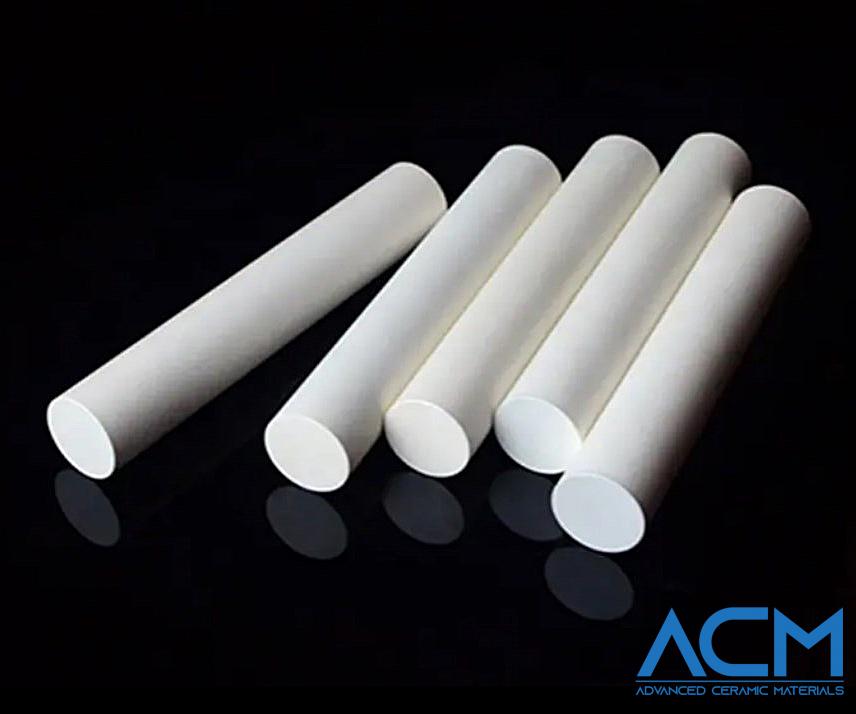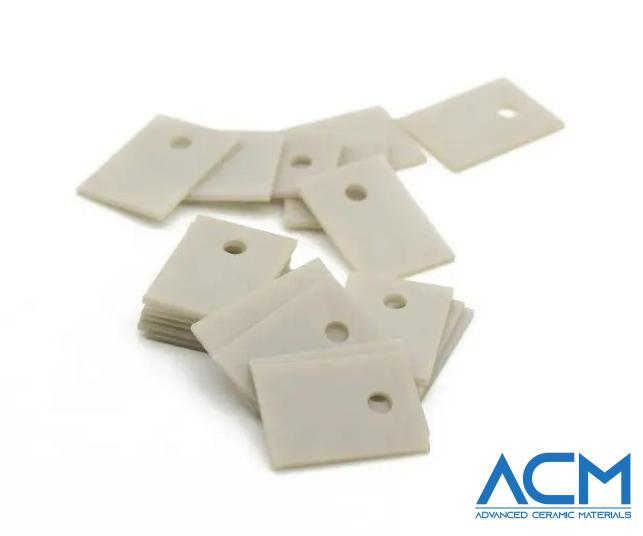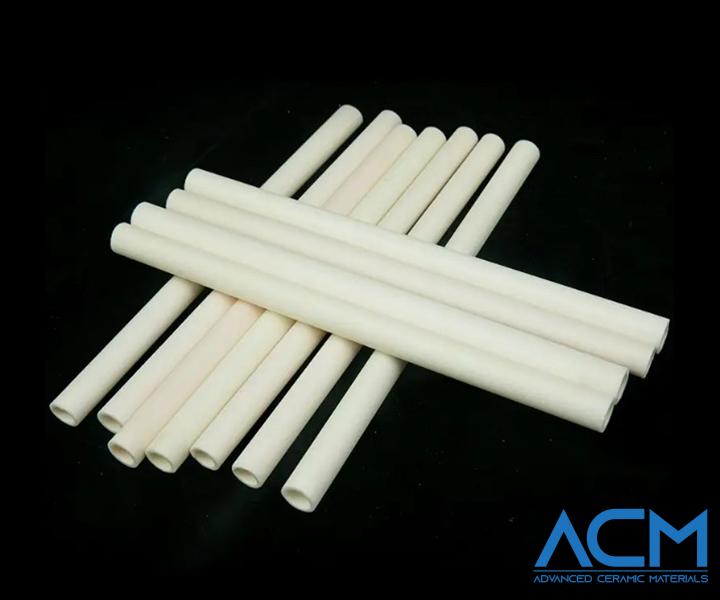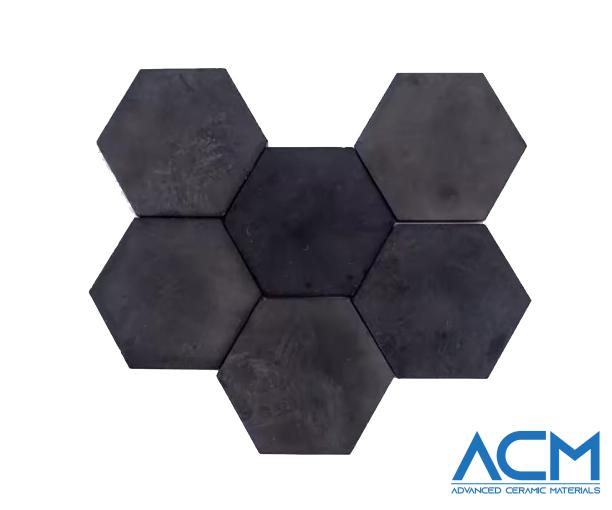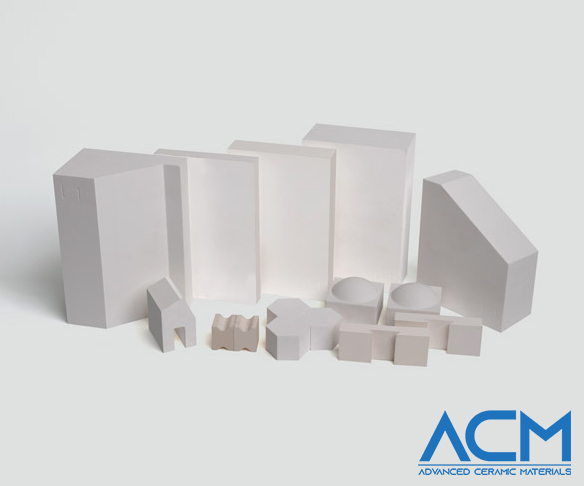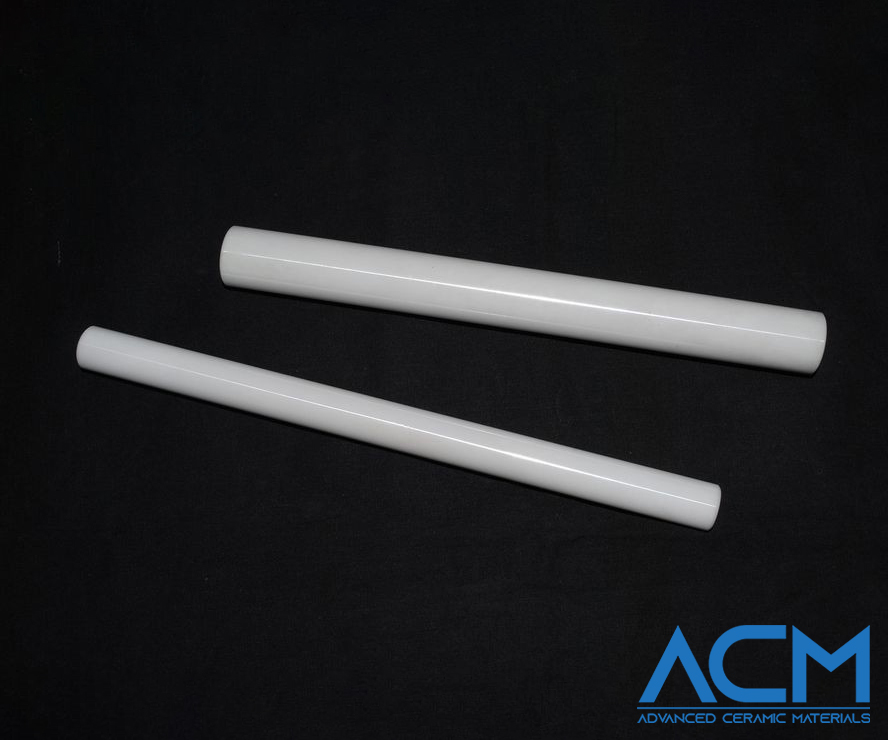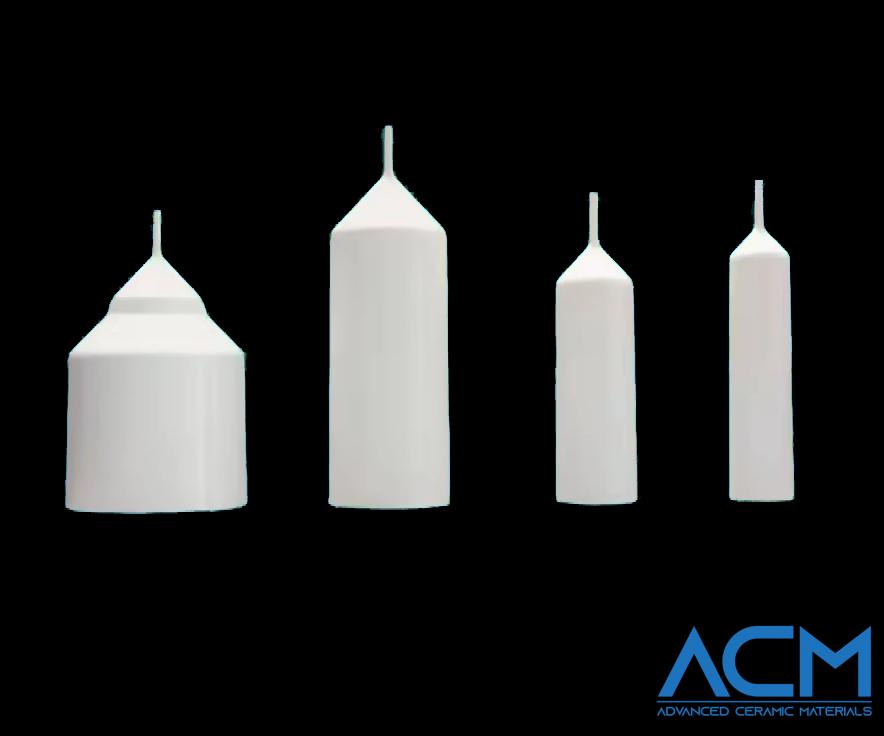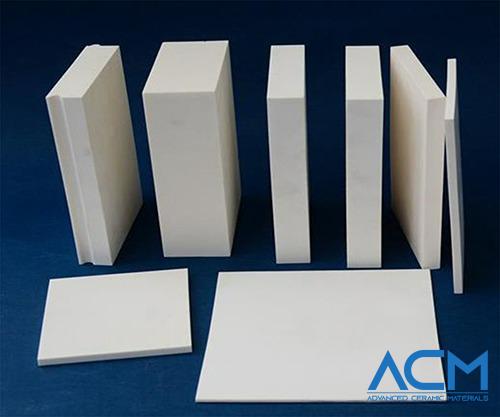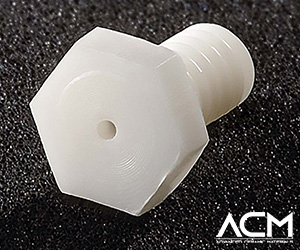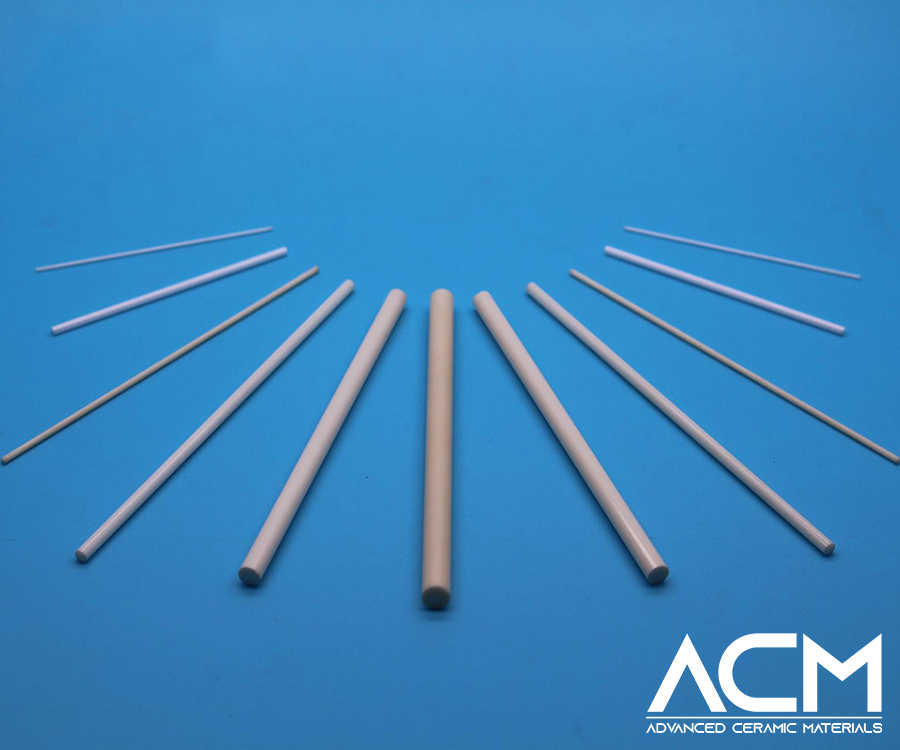Introduction
High-temperature ceramic materials are essential in modern industries where extreme conditions are common, such as aerospace, energy production, electronics, and advanced manufacturing. These materials exhibit exceptional properties like high thermal resistance, mechanical strength, and durability under harsh conditions. This article explores the top 10 ceramic materials that perform best in high-temperature environments, focusing on their properties, applications, and unique advantages.
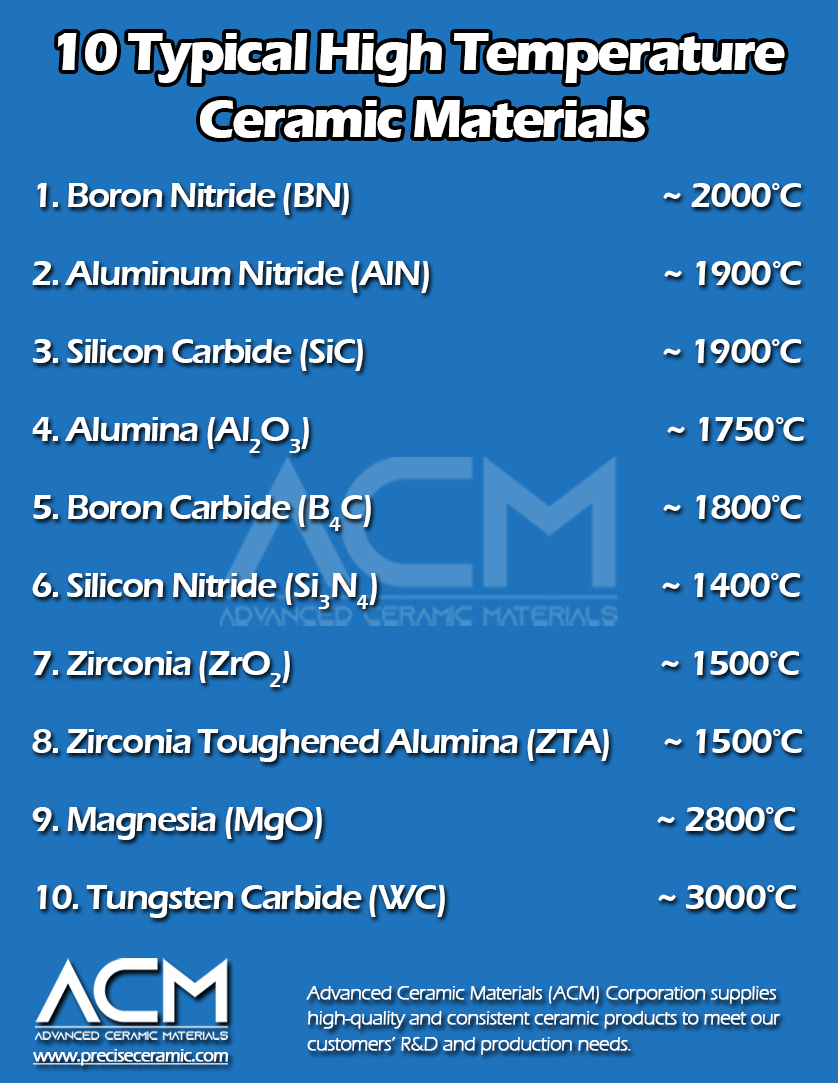
1. Boron Nitride (BN) - 2000°C
- Key Properties: Boron Nitride is a highly versatile material that combines excellent thermal conductivity with electrical insulation properties. It has a unique hexagonal structure that allows for easy machining, making it ideal for complex applications. BN remains stable at elevated temperatures, offering low friction and high oxidation resistance.
- Challenges: While BN has superb thermal conductivity, its mechanical strength is lower compared to other high-temperature ceramics, limiting its use in structural applications.
- Common Applications: Boron Nitride is primarily used in high-performance electrical components such as insulators, heat shields, and thermal management systems. Its high thermal stability makes it an ideal choice for electronic packaging and aerospace applications.
2. Aluminum Nitride (AlN) - 1900°C
- Key Properties: Aluminum Nitride is a robust material that stands out for its high thermal conductivity and electrical insulation properties. It is a hard, crystalline material that resists thermal expansion, making it ideal for high-power electronic devices and components. It also provides excellent dielectric properties and thermal shock resistance.
- Challenges: While AlN exhibits great mechanical strength, it can be difficult to process due to its brittleness, which requires careful handling during manufacturing.
- Common Applications: AlN is often used in electronic substrates, high-temperature semiconductors, and microelectronics. Its properties make it valuable for power electronics, LED heat sinks, and optoelectronic components.
3. Silicon Carbide (SiC) - 1900°C
- Key Properties: Silicon Carbide is one of the most durable ceramic materials, combining high strength, hardness, and thermal conductivity. SiC also possesses excellent corrosion resistance and is highly resistant to thermal shock. It has low thermal expansion and high endurance under extreme mechanical stress.
- Challenges: SiC's brittleness at very high temperatures can pose challenges in certain applications, especially in environments with fluctuating thermal cycles.
- Common Applications: Silicon Carbide is widely used in applications requiring high mechanical performance and thermal conductivity, such as in heat exchangers, semiconductor devices, and structural components in aerospace. It's also used for electric vehicle components due to its high efficiency and thermal conductivity.
4. Alumina (Al₂O₃) - 1750°C
- Key Properties: Alumina is one of the most common ceramic materials, well known for its high hardness, excellent wear resistance, and good thermal stability. Alumina is highly versatile and can be found in both high-purity (99.99%) and standard grades. It offers high electrical insulation and is resistant to most acids and alkalis.
- Challenges: While Alumina is extremely tough, its brittleness limits its application in situations where impact resistance is critical. It also has a relatively low thermal conductivity compared to other advanced ceramics.
- Common Applications: Alumina is commonly used in electronic insulators, cutting tools, and as a structural material for high-temperature furnace linings. High-purity alumina is widely employed in semiconductor and lighting applications, while standard grades are used in industrial machinery and wear-resistant parts.
5. Boron Carbide (B₄C) - 1800°C
- Key Properties: Boron Carbide is known for its extreme hardness, second only to diamond, and its lightweight nature. It provides excellent wear resistance, making it ideal for high-stress applications. It also offers good thermal stability and is resistant to oxidation at high temperatures.
- Challenges: The material’s hardness makes it difficult to machine and process. Its brittleness also limits its application in some high-impact environments.
- Common Applications: Boron Carbide is often used in ballistic armor, abrasives, and high-performance cutting tools. It also finds applications in nuclear reactors and chemical industries due to its resistance to radiation and corrosion.
6. Silicon Nitride (Si₃N₄) - 1400°C
- Key Properties: Silicon Nitride offers exceptional mechanical strength, thermal shock resistance, and wear resistance. It is known for its ability to withstand high mechanical loads and extreme temperature fluctuations without failing. It also has a low coefficient of friction, making it ideal for use in bearing and sealing applications.
- Challenges: Silicon Nitride is difficult to process due to its hardness and brittle nature, requiring advanced manufacturing techniques.
- Common Applications: Silicon Nitride is used in gas turbine engines, automotive parts like valves and bearings, and as a material for high-performance ceramic seals and bearings.
7. Zirconia (ZrO₂) - 1500°C
- Key Properties: Zirconia is a highly durable ceramic that offers superior thermal shock resistance and excellent mechanical strength even at high temperatures. It also exhibits high resistance to corrosion and wear, making it an excellent material for challenging environments.
- Challenges: One of the challenges with Zirconia is its high thermal expansion rate, which can cause issues in precision applications if not properly engineered.
- Common Applications: Zirconia is used in applications such as dental implants, oxygen sensors, fuel cell components, and thermal barrier coatings in turbines.

8. Zirconia Toughened Alumina (ZTA) - 1500°C
- Key Properties: Zirconia Toughened Alumina combines the best attributes of both materials, offering enhanced toughness, shock resistance, and excellent wear resistance. It retains good thermal properties and is often used in high-impact applications.
- Challenges: While it improves toughness compared to pure Alumina, it is still less tough than other materials such as Silicon Nitride.
- Common Applications: ZTA is used in cutting tools, wear-resistant coatings, and components in aerospace and automotive industries.
9. Magnesia (MgO) - 2800°C
- Key Properties: Magnesium Oxide has one of the highest melting points among ceramics and is known for its low thermal conductivity, making it ideal for high-temperature insulation. It also offers excellent resistance to thermal shock.
- Challenges: While it excels in high-temperature environments, Magnesia is vulnerable to moisture, which can affect its performance in certain applications.
- Common Applications: Used primarily in refractory linings for furnaces, kilns, and reactors, and in electrical insulation in high-voltage applications.
10. Tungsten Carbide (WC) - 3000°C
- Key Properties: Tungsten Carbide is renowned for its extreme hardness, high tensile strength, and ability to withstand very high temperatures. It is one of the most robust materials available, with outstanding wear resistance and thermal stability.
- Challenges: Tungsten Carbide can be brittle under certain conditions and is challenging to machine. However, its properties make it invaluable for specific high-performance applications.
- Common Applications: It is used in cutting tools, industrial machinery components, and for high-temperature applications like nozzles and turbine blades.
Conclusion
High-temperature ceramic materials play a critical role in supporting modern industries under extreme conditions. From aerospace to energy and electronics, these materials provide the thermal stability, mechanical strength, and durability required for advanced applications. The ten materials highlighted here demonstrate the versatility of ceramics, with each offering specific properties to meet diverse industrial needs.
As developments in ceramic technology continue, companies like Advanced Ceramic Materials (ACM) play an important role in supplying reliable, high-quality materials. With the increasing demand for solutions capable of performing in harsh environments, high-performance ceramics will remain a cornerstone of industrial and technological advancement.









